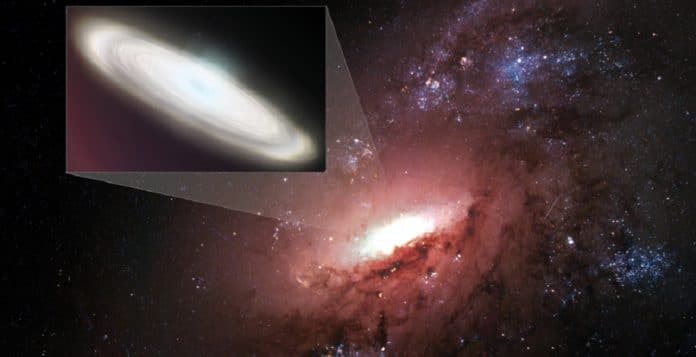A new set of measurements significantly suggests that theorists need to revise the “standard model” that describes the fundamental nature of the Universe.
The new measurements came after scientists used a set of radio telescopes to determine the rate at which the universe is expanding. But, they found that the measurements aggravate an inconsistency between previously measured values of the Hubble Constant and the value predicted by the model when applied to estimations of the enormous microwave foundation made by the Planck satellite.
James Braatz, of the National Radio Astronomy Observatory (NRAO), said, “We find that galaxies are nearer than predicted by the standard model of cosmology, corroborating a problem identified in other types of distance measurements. There has been debate over whether this problem lies in the model itself or in the measurements used to test it. Our work uses a distance measurement technique completely independent of all others, and we reinforce the disparity between measured and predicted values. The basic cosmological model involved in the predictions is likely the problem.”
The Hubble Constant is the unit of measurement used to describe the expansion of the universe by measuring the distances to galaxies and their recession speeds. The more distant a galaxy is, the more prominent its recession speed from Earth. Today, the Hubble Constant remains a crucial property of observational cosmology and a focus of numerous modern studies.
However, predictions of the Hubble Constant from the standard cosmological model when applied to measurements of the cosmic microwave background (CMB) — the leftover radiation from the Big Bang — produce a value of 67.4, a significant and troubling difference.
This difference is beyond the experimental errors in the observations, has severe implications for the standard model.
The model is called Lambda Cold Dark Matter, or Lambda CDM, that divides the composition of the Universe mainly between ordinary matter, dark matter, and dark energy, and describes how the Universe has evolved since the Big Bang.
For this study, scientists refined their distance measurements to four galaxies, at distances ranging from 168 million light-years to 431 million light-years. Combined with previous distance measurements of two other galaxies, their calculations produced a value for the Hubble Constant of 73.9 kilometers per second per megaparsec.
Dom Pesce, a researcher at the Center for Astrophysics | Harvard, and Smithsonian, and lead author on the latest paper said, “Testing the standard model of cosmology is a challenging problem that requires the best-ever measurements of the Hubble Constant. The discrepancy between the predicted and measured values of the Hubble Constant points to one of the most fundamental problems in all of physics, so we would like to have multiple, independent measurements that corroborate the problem and test the model. Our method is geometric and completely independent of all others, and it reinforces the discrepancy.”
Mark Reid of the Center for Astrophysics | Harvard, and Smithsonian and a member of the Megamaser Cosmology Project team said, “The maser method of measuring the expansion rate of the universe is elegant, and, unlike the others, based on geometry. By measuring exact positions and dynamics of maser spots in the accretion disk surrounding a distant black hole, we can determine the distance to the host galaxies and then the expansion rate. Our result from this unique technique strengthens the case for a key problem in observational cosmology.”
Braatz said, “Our measurement of the Hubble Constant is very close to other recent measurements, and statistically very different from the predictions based on the CMB and the standard cosmological model. All indications are that the standard model needs revision.”
Journal Reference:
- D. W. Pesce., The Megamaser Cosmology Project. XIII. Combined Hubble Constant Constraints. arXiv:2001.09213
